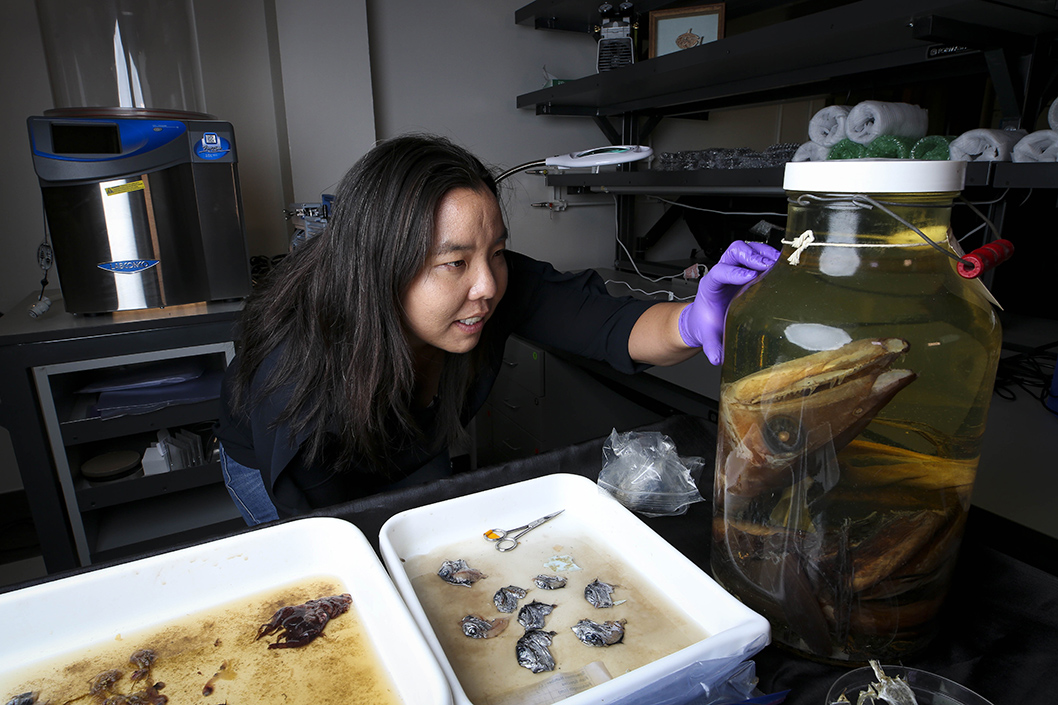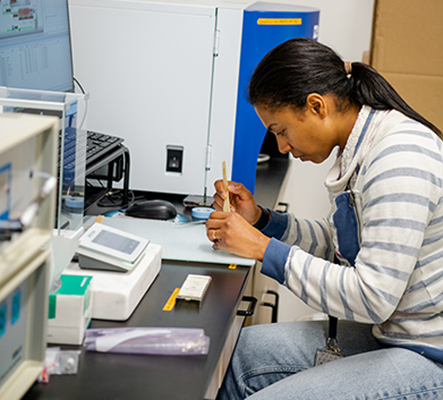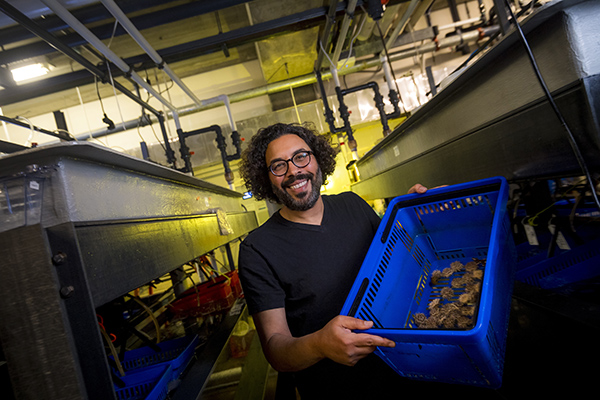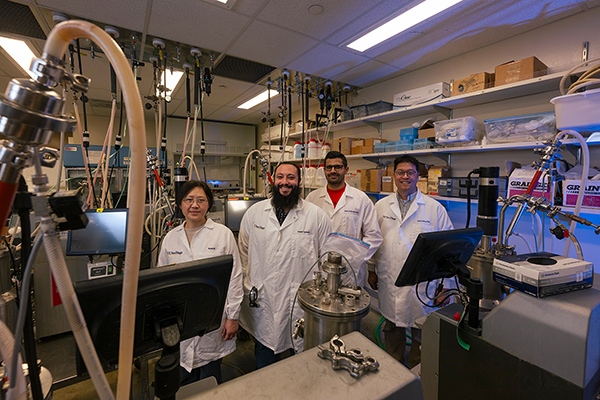UC San Diego Receives $7.35M for Scripps Center Advancing Ocean Health
The University of California San Diego was awarded $7.35 million in funding from the National Science Foundation (NSF) and the National Institutes of Health (NIH) for a multidisciplinary program to advance understanding of marine contaminants and nutrients in a changing climate, and to ensure that safe and healthy seafood is available and accessible to all people.
The funding, to be awarded over five years, will enable the re-establishment of the Scripps Center for Oceans and Human Health as one of four new nationwide centers focused on understanding how ocean-related exposures affect people’s health.
The center brings together experts from UC San Diego’s Scripps Institution of Oceanography, Skaggs School of Pharmacy and Pharmaceutical Sciences, and the School of Biological Sciences, as well as NOAA’s California Sea Grant and the Southwest Fisheries Science Center. Its multidisciplinary research team will explore the sources, fates and potential toxicity of human-made and natural chemicals in the ocean, and further study their environmental distribution and movement through the marine food web.

“The Scripps Center for Oceans and Human Health will bring together a range of scientific disciplines to advance of our understanding of seafood security to ensure we maintain our access to safe and healthy seafood,” said Bradley Moore, professor of marine chemistry at Scripps Oceanography and Skaggs School of Pharmacy and Pharmaceutical Sciences, who will serve as center director. “Scientific discoveries are the first of many steps to ensuring seafood safety, and to help with the process, the center will also have a focus on community engagement to work with fishers, chefs, non-profits, and the public at large to bridge scientific discovery with the community.”
The team will look at health benefits from nutrients like selenium and omega-3 fatty acids, and examine toxic heavy metals like methylmercury and organic pollutants like polychlorinated biphenyls (PCBs) and polybrominated diphenyl ethers (PBDEs), and how concentrations may be impacted in a changing climate. PCBs are industrial chemicals banned in the U.S. in 1979, and PBDEs are a class of fire retardant chemicals that can be both human made and occur naturally in the ocean.
“The ocean is absorbing more than 90% of excess heat caused by human activity, which is causing habitat migration and compression, low oxygen zones, and biodiversity loss,” said Margaret Leinen, vice chancellor for marine sciences at UC San Diego and director of Scripps Oceanography. “It’s important to understand how these changes may impact seafood security, given that three billion people consume seafood globally each year. UC San Diego is uniquely positioned to bring together leaders across oceanography, biomedical and human health sciences, and community engagement experts to bridge the science to society.”
UC San Diego is uniquely positioned to bring together leaders across oceanography, biomedical and human health sciences, and community engagement experts to bridge the science to society.
The center will focus on three primary research endeavors and include a large community engagement program:
Climate change impacts on the human intake of seafood micronutrients and contaminants
Led by Scripps Oceanography marine biogeochemist Amina Schartup and biological oceanographer Anela Choy, this project aims to understand how nutrients and contaminants like mercury and other chemicals are bioaccumulating in the marine food web. Schartup and Choy will also develop models to simulate the cycling of methylmercury and PCBs, and potential human exposure, under different climate change scenarios.
In 2019, Schartup led novel research that found warming oceans could lead to an increase in methylmercury in popular seafood, including cod, Atlantic bluefin tuna and swordfish. Her findings attributed the increases to corresponding changes to food web dynamics.
“Habitat change such as fish leaving or fish joining an ecosystem means a new food source has entered the ecosystem of a region,” said Schartup. “We’ll be looking at if those ocean changes are potentially going to impact contaminants or micronutrient levels in these animals.”


Choy studies the intricacies of the marine food web — who is eating whom — and impacts of environmental change on open-sea ecosystems. She has also studied what happens when microplastics enter deep sea food webs. This project will examine organisms lower on the food web and from deeper waters such as open ocean fishes, squids and crustaceans in Southern California waters.
Choy’s previous work demonstrated that methylmercury sources vary with depth, which has implications for how the heavy metal enters and moves through the marine food web.
By analyzing fish specimens in the lab to measure levels of methylmercury in their tissue and identifying sources of that methylmercury, the researchers can feed this information into climate models to predict how it may affect contaminants and nutrients over time.
“The vast majority of contaminant work focuses on familiar species at the very top of the food web,” said Choy. “But, how those contaminants between organisms require more study. We want to understand the food web pathways that dictate methylmercury levels in animals that may end up on our dinner plates.”
The marine microbiome as a source for the synthesis, transformation, and distribution of seafood contaminants
The second research area will analyze the marine microbiome to see how PBDEs, including ones produced naturally by sea sponges, are made and how they circulate within fish bodies and the larger marine ecosystem. According to Moore, only one atom differentiates natural PBDEs from sea sponges and the human-made chemicals used in making fire retardants. This project aims to understand why organisms make these chemicals and how the PBDEs can degrade both the naturally occurring and human made toxins.
Some of the genetic analysis and sample processing for this effort will take place at the Illumina Labs on campus, which house equipment that allow scientists to screen thousands of cells a day, observe protein evolutions, analyze DNA isolation for microbiome studies, and more.
This research effort will be led by Moore and Eric Allen, a professor of marine biology and molecular biology with a joint appointment between Scripps and the School of Biological Sciences at UC San Diego.

Mechanisms of bioaccumulation and developmental toxicity of seafood pollutants
The third research program will be co-led by Scripps marine biologist Amro Hamdoun and Geoffrey Chang, professor at the Skaggs School of Pharmacy and Pharmaceutical Sciences at UC San Diego, who collaborate to examine how chemicals get into cells. They are zooming in at a molecular level to understand how marine pollutants are transported into organisms, how pollutants further accumulate in the organism and how these pollutants are taken up by the human body.
“There are some pollutants and chemicals that end up in our bodies and some that don’t accumulate,” said Hamdoun, who will also serve as associate director of the center. “With this research, we hope to understand the biology in the ocean that underlies whether a chemical can accumulate in the body.”
Hamdoun’s lab works with sea urchins, which like fruit flies have been an organism used in biomedical research for more than a century to understand cell and developmental biology. This program will allow the lab to further examine how pollutants interact during early life stages of embryo development in sea urchins. As model organisms, urchins can aid in our understanding of the health impacts stemming from early-life chemical exposures in humans.
Chang, an expert on protein structure, will closely examine transporter proteins from both polluted and healthy fish, sea urchins and human cells to uncover the molecular machinery that pollutants leverage to gain access to these organisms. Understanding how organisms survive or adapt to pollutants at a cellular level could reveal new ways humans can protect ourselves from seafood contaminants.
Community Engagement
The Scripps Center for Oceans and Human Health will also engage with the public to build capacity for public health risk prevention while highlighting the health benefits of consuming fish.

Theresa Talley, a coastal specialist with California Sea Grant and Scripps, and Sarah Mesnick, an ecologist at NOAA Fisheries Southwest Fisheries Science Center and an adjunct faculty member at Scripps, will serve as community engagement leads.
Community engagement activities will integrate the research from this center with other current science to provide resources for the public and other stakeholders. This effort helps to ensure that the benefits of seafood consumption outweigh any risks. Community engagement activities could include web-based resources, seafood education events with chefs at the demonstration kitchen at the Marine Conservation and Technology Facility at Scripps, and partnerships with fishing communities in the San Diego region. Through these collaborations, they aim to improve understanding of local seafood and co-create accurate and effective information resources.
“A lack of clear links between many contaminants and human health often leaves people confused and uncertain of what to look for or eat, and reacting to the latest news cycle,” said Mesnick. “Our goal is to build and foster lasting partnerships with communities to better understand needs and barriers to accessing and using information about seafood sustainability and safety.”
“This Center’s discoveries will improve our understanding of mechanisms for how contaminants and micronutrients move, accumulate, and affect marine organisms and ocean food webs,” added Talley, who recently published a paper examining the contamination risks and social vulnerability associated with recreational shellfish harvest in San Diego Bay. “While many additional steps will be needed to understand how these findings apply to seafood safety and human health, these discoveries will contribute to a larger conversation about the complexities of contaminant dynamics, including how risks may vary with species, interactions with other compounds like nutrients, and changing climatic conditions.”
This NIH and NSF grant marks the re-forming of the Scripps Center for Oceans and Human Health, which had been supported from 2013-2018. The center was originally launched to examine emerging contaminants found naturally in common seafoods, as well as man-made chemicals that accumulate in human breast milk. The revived center will expand human health research at Scripps, which is also home to its Center for Marine Biotechnology and Biomedicine, which emphasizes marine drug discovery, the ocean microbiome, molecular epidemiology, marine cell biology and development, and the physiology of marine mammals.

